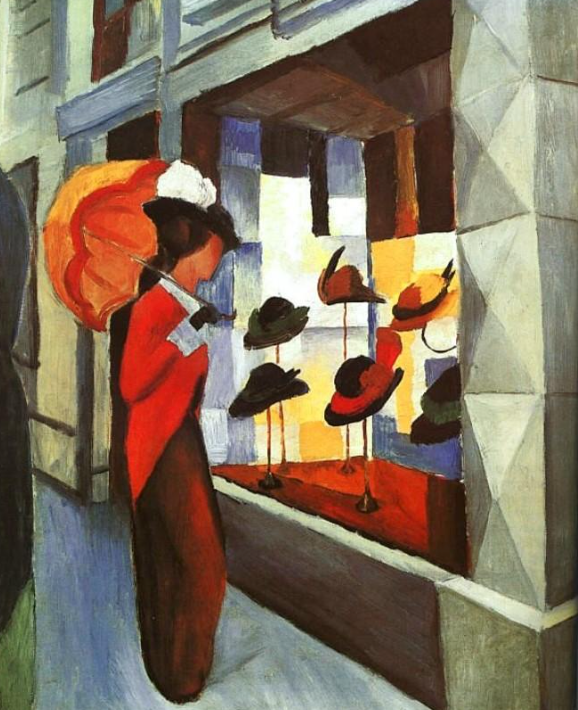Art & Adolescence: A Creative Path to Self-Discovery
- Ismir Delija

- Aug 14
- 3 min read
Adolescence is a transformative period marked by rapid changes in identity, emotion, and relationships. Amid this turbulence, art often becomes a powerful outlet for teens, providing a way to express themselves, explore their individuality, and navigate the complexities of growing up.
Art as Identity Exploration
For adolescents, art is more than a creative pursuit - it’s a way to define who they are. During this phase, young people grapple with questions of identity, striving to assert their individuality and challenge societal norms. Artistic expression allows them to explore their inner selves and communicate their unique perspectives on issues like gender, race, or social status.
Creating art isn’t just about aesthetics; it’s a deeply personal act of self-discovery. Through drawing, painting, writing, or music, adolescents craft a visual or auditory representation of their emotions, struggles, and aspirations, creating a medium for understanding and affirming who they are.
The Role of Art in Education
In Montessori education, art serves as a tool for emotional and social growth. By expressing their feelings through creative projects, students can process and manage emotions like frustration or joy. Collaborative art projects in Montessori classrooms also foster social skills such as teamwork, empathy, and respect for others’ ideas. These experiences enrich students' interpersonal connections and prepare them for life beyond the classroom.
Meeting Adolescents' Needs Through Art
To support adolescents effectively, it’s essential to address their specific developmental needs. These include:
Creative Expression: Providing opportunities for personal artistic projects helps students explore and express their individuality.
Competence and Achievement: Encouraging effort and celebrating creativity fosters a growth mindset and builds confidence.
Positive Social Interaction: Group art projects promote collaboration, empathy, and a sense of belonging.
Structure and Meaningful Participation: Offering clear guidance while encouraging creative freedom gives students a safe space to thrive.
Keeping Art Relevant
Incorporating modern trends, technology, and cross-disciplinary approaches into art education makes it more engaging and relatable for today’s adolescents. For instance, blending art with science, social activism, or digital media opens up new creative possibilities and helps students see the relevance of art in broader contexts.
Examples and experiences
Fostering motivation and engagement in students requires a thoughtful approach. By allowing them the time they need, offering a diverse range of topics, and connecting assignments to their personal interests, educators can significantly enhance student involvement in the creative process.
One example of this approach in action involved a student who initially lacked enthusiasm for practical work but had an interest in graffiti culture. By assigning him a project on a graffiti artist of his choice, his motivation soared. He not only created a compelling presentation but also dedicated time to replicating the artist’s unique style, demonstrating an impressive level of effort and creativity.
Another key factor in student success is allowing sufficient time for artistic development. Adolescents, in particular, seek meaningful outcomes in their work. Rushing the process can lead to frustration and a sense of failure due to a perceived lack of skill. By extending project timelines, students are able to refine their work, resulting in greater artistic growth and increased self-confidence.
Currently, P3 students are in the final stages of replicating works by renowned artists - without the pressure of strict deadlines. This freedom has allowed them to produce remarkable pieces, showcasing the profound impact of an open approach to artistic learning. The comparison between original artworks and student recreations clearly illustrates the benefits of giving young artists the time and space they need to flourish.
Here are several examples of their work, created at their own pace without the pressure of strict deadlines:


By integrating personal interests and allowing flexible timelines, educators can cultivate a more enriching and motivating learning experience, ultimately empowering students to take pride in their creative journeys.
Conclusion
Art is a vital tool for adolescent development, offering an outlet for self-expression, emotional growth, and social connection. For educators, the challenge lies in fostering creativity while staying attuned to students' evolving interests and needs. By embracing their passions, celebrating their efforts, and inspiring them to think beyond traditional boundaries, art teachers play a pivotal role in shaping the holistic development of their students.
Art is not just a subject to be taught - it’s a journey that helps adolescents navigate the path to self-discovery.








situs slot
link gacor
The rise of fake news has challenged the credibility of the media. Social networks have made it easier for misinformation to spread rapidly. Journalists now carry the responsibility of fact-checking and ensuring accuracy, while audiences must also become more media literate to distinguish reliable sources from fabricated narratives. www.galaxyartsinc.com
Real estate investment trusts (REITs) provide an attractive entry point for businesses and individuals who want exposure to property markets without owning physical buildings. REITs diversify portfolios, reduce risk, and offer steady dividends. This makes them a popular strategy for both seasoned business investors and newcomers to real estate. www.rghhomes.com
Wars often drive technological innovation, later benefiting civilians. The internet, GPS, and even certain medical procedures originated in military research. However, it raises the ethical dilemma of progress being fueled by conflict. Should society depend on war to accelerate innovation, or can peace inspire similar breakthroughs? www.profitdonationcapitalism.org
Indoor plants are more than just decorative items; they play an important role in air purification. Plants like snake plants, peace lilies, and spider plants filter toxins from indoor air. They also create a calming effect, making homes more peaceful and pleasant. Truly, houseplants are natural health boosters. www.myoldcokecountyhome.com